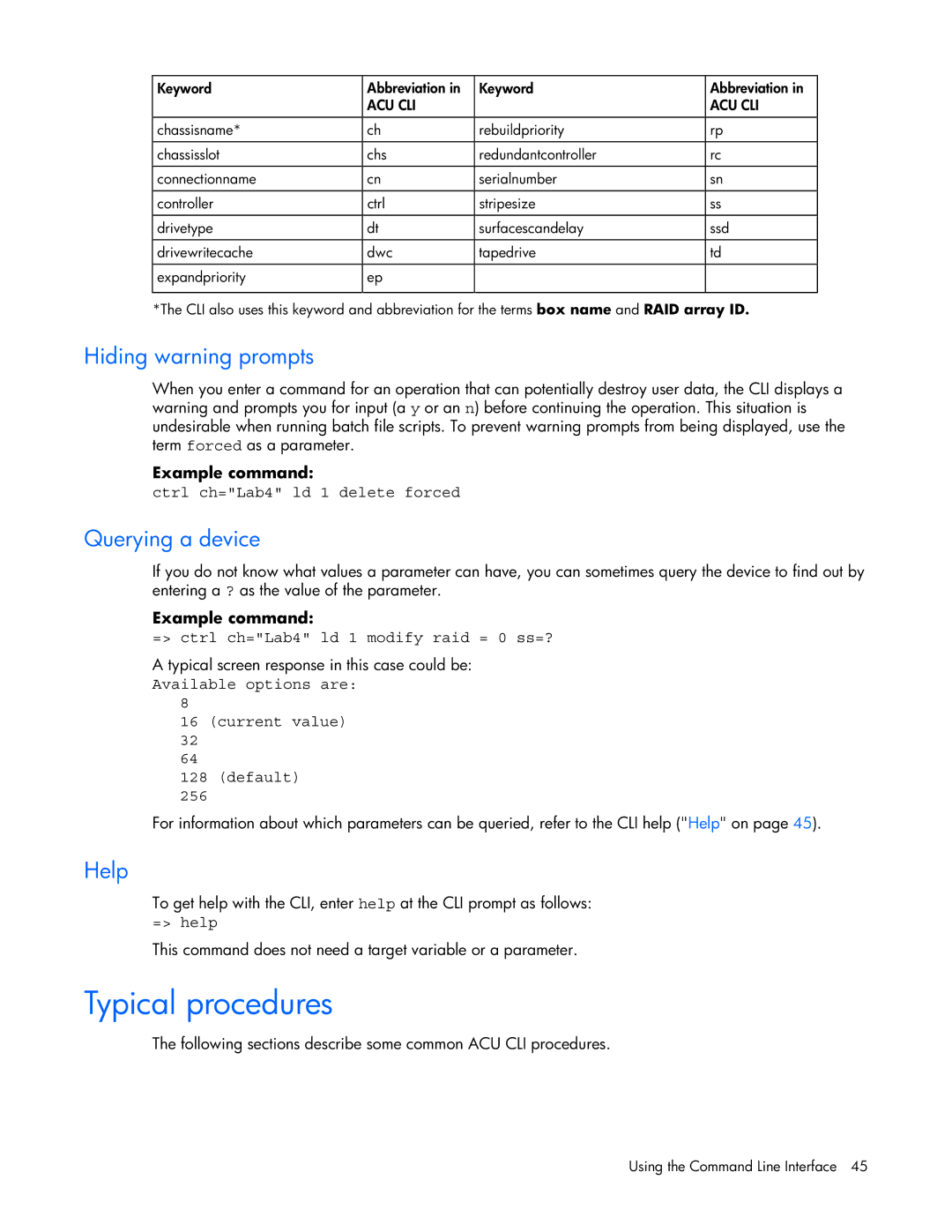Keyword | Abbreviation in | Keyword | Abbreviation in |
| ACU CLI |
| ACU CLI |
|
|
|
|
chassisname* | ch | rebuildpriority | rp |
|
|
|
|
chassisslot | chs | redundantcontroller | rc |
|
|
|
|
connectionname | cn | serialnumber | sn |
|
|
|
|
controller | ctrl | stripesize | ss |
|
|
|
|
drivetype | dt | surfacescandelay | ssd |
|
|
|
|
drivewritecache | dwc | tapedrive | td |
|
|
|
|
expandpriority | ep |
|
|
|
|
|
|
*The CLI also uses this keyword and abbreviation for the terms box name and RAID array ID.
Hiding warning prompts
When you enter a command for an operation that can potentially destroy user data, the CLI displays a warning and prompts you for input (a y or an n) before continuing the operation. This situation is undesirable when running batch file scripts. To prevent warning prompts from being displayed, use the term forced as a parameter.
Example command:
ctrl ch="Lab4" ld 1 delete forced
Querying a device
If you do not know what values a parameter can have, you can sometimes query the device to find out by entering a ? as the value of the parameter.
Example command:
=> ctrl ch="Lab4" ld 1 modify raid = 0 ss=?
A typical screen response in this case could be:
Available options are: 8
16 (current value)
32
64
128(default)
For information about which parameters can be queried, refer to the CLI help ("Help" on page 45).
Help
To get help with the CLI, enter help at the CLI prompt as follows:
=> help
This command does not need a target variable or a parameter.
Typical procedures
The following sections describe some common ACU CLI procedures.
Using the Command Line Interface 45
